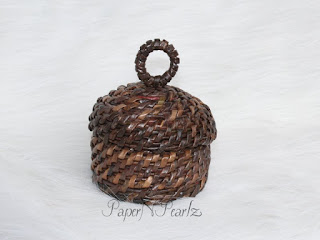The Sweet Spring Kusudama is a very simple but very elegant looking origami kusudama, designed by Natalia Romanenko. Each unit is a combination of 2 or 3 smaller modules. Why do I say 2 or 3? Because, while the instructions I found online require 3 modules, you can make do with just 2 of them.
The basic module is an origami pig base. This is formed from a square. To this module, we add 2 modules folded from a rectangle. This forms the star and a wavy loop on the star. Well, I didn't want the wavy bit, so I stopped with just the star. Hence had ended up with 2 instead of 3 modules.
So once these units are assembled, the kusudama is formed by inserted 1 unit into the next. The assembly is very simple and the model holds well together.
I have been meaning to use indigo coloured paper for a long time now, so I clubbed it with orange paper to give me a very bright sweet spring kusudama!
Have you tried out this kusudama? Do give it a go, if you haven't.
Model Details:
Model: Sweet Spring Kusudama
Creator: Natalia Romanenko
Difficulty Level: Low Intermediate
Paper Ratio: Square + Rectangle in ratio 1:2
Paper Size: 3 inches square / 3 inches by 1.5 inches rectangle
Model Size: ~4 inches in diameter
Modules: 60
Instructions: Paper Finger Cuts
Tutorial: Youtube




















